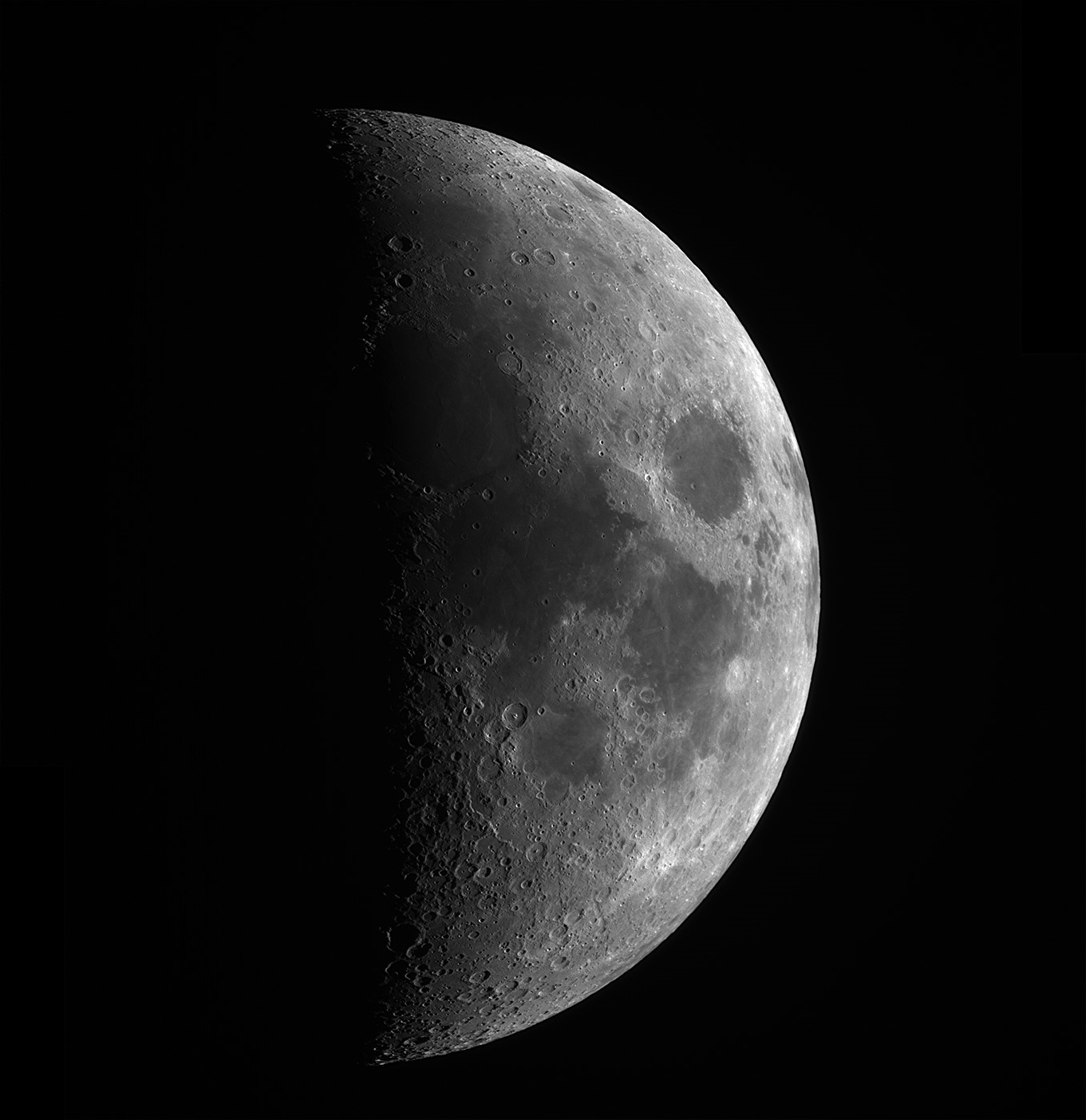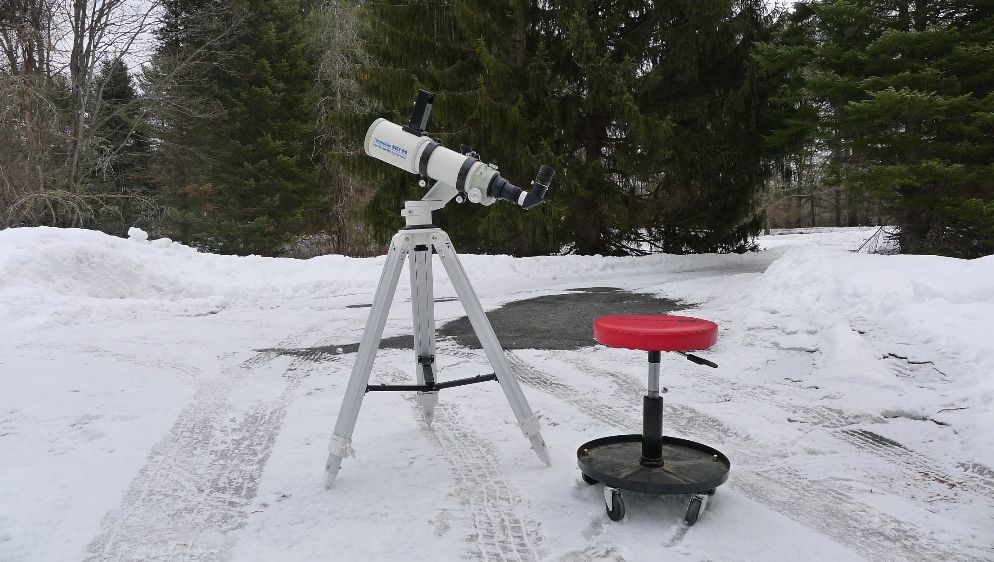
Updated 4/1/14
Despite the relatively small number of units sold, the Astro-Physics Stowaway single-handedly revived interest in the compact, premium 90 mm refractor market in the late 1990s. While I didn't have one on hand for comparison, I did have access to two of its spiritual descendants, the FCL-90, dubbed the "Sky 90" from Takahashi, and the TMB 92. You might wonder why anyone would go through the hassle and expense of obtaining a nice 90 mm refractor - why not just get any of the excellent 80 mm apos on the market, and be done with it? Well, you could (and many do.) But moving up from an 80 mm to a 90 mm winds up being a bigger jump than the extra 10 mm might suggest. A 90 mm brightens familiar objects, and opens up new vistas, without the bulk of a 4" refractor.
How do these scopes compare with one another, and should you get one? Read on, and find out!
Despite mixed reviews, including my own, I suddenly had a hankering to buy a Sky 90 to compliment my FC-76 and FS-102. The Sky 90 debuted in 2000, and employs a widely-spaced doublet, the first (and to my knowledge, the only) Takahashi refractor to use this arrangement. The 90 mm f/5.6 apo folds up into a remarkably compact package - just over 14", well under airline carryon limits. It is a solid and substantial piece of hardware, weighing 8.1 in the configuration you see here. It has a 2" visual back, plus the standard flat plate for a finder. The tube is the same 95 mm unit used in the FS-78. I decided to keep the cost down by attaching a Rigel Quik-Finder to the retractable dew shield, and instead of springing for another ~$160 cast iron clamshell, I sleeved down a pair of 4" hinged Orion rings with sticky-backed felt. The focuser is the excellent and smooth unit you see on all Taks. These Sky 90s have come under some scrutiny by reviewers. Some have noted miscollimation, false color, curved fields, and less-than-sharp optics at higher powers. My earlier sample had some of these issues, but the one to watch out for is miscollimation - the lens cell cannot be collimated (a rarity with Takahashi refractors) so what you get is what you live with. When I got this Sky 90, the first thing I did was run a mask test and a star test. I didn't detect any issues with collimation in mine. When last sold, the OTA listed for $2400. Add the clamshell, finder and bracket, various other extension tubes, and diagonal, and you could well be into the $3K range.
The Sky 90 has been discontinued, but clean used samples show up from time to time on Astromart. It was replaced by the Sky 90 II (also discontinued.)

The TMB 92 (92 mm f/5.5) is available in two different configurations - as the Signature Series ("SS") at $1999 with a hefty removable chunk of the optical tube for binoviewer use, or as a plainer unit with a solid tube for about $1499. The hinged 114 mm rings add another $100. Unlike the Sky 90's doublet, the TMB 92 uses an air-spaced triplet. Its 3" dual-speed Feathertouch focuser is also much larger. The retractable dew shield is huge at 130 mm. The scope looks a lot bigger than a 3.5 refractor, and most people seeing it for the first time assume that it's a 4", or even larger (Takahashi's FS-102 also uses 114 mm rings, for example.) With the focuser retracted, the scope is 15.5" long, quite short for such a stout tube. Various web sites claim a weight of 8.5 lbs, but once you add the rings, plate, and diagonal, the whole unit can reach upwards of 13 lbs. That's a lot. The owner of this scope, John P, mounts his on a Losmandy G11. We used it on my GM-8 with no problems, and the owner states that he even mounts it on his Gibraltar (he fashioned a wooden plate to adapt his D-plate to the Gibraltar's cradle.) Although the tube is pushing the limits of a Gibraltar, John says that for causal use, this setup is OK. In contrast, my Sky 90 lives happily on a CG-4, and even on my Vixen Porta. These mounts weigh a small fraction of the G11, an important consideration if you're going to be moving the scope a lot. Unlike the Sky 90, which comes in Takahashi's usual plain cardboard box, the TMB92 arrives with a nice padded aluminum case. So even though you're getting a lot more "stuff" with the TMB, it actually winds up costing the owner a lot less.
The TMB is backordered and/or showing "unavailable" as of this writing. The company has been purchased by Astro-Tech, and the new owners may be revamping the model.
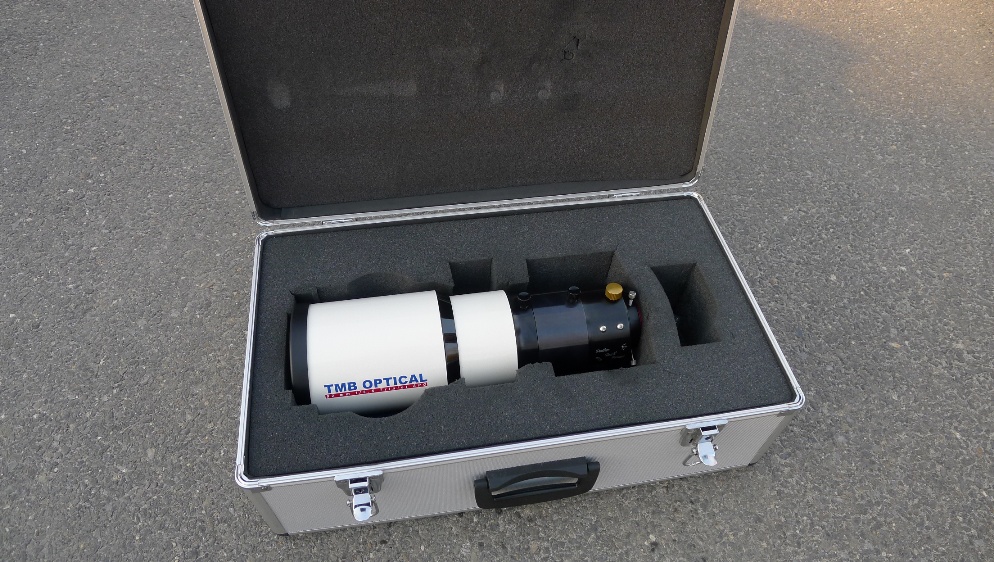
John P and I were eager to compare our scopes and we did so, in between Polar Vortex conditions in March of 2014. I used the Sky 90 on my CG-5 and on my Porta II, just to show off how easy it was to move the thing around with one hand. John's TMB 92 SS sat planted on his G11 and never once moved (nor could it have, even with two strong arms.) We were able to run some tests.
Mechanical Construction:
The Sky 90 is decked out in Takahashi's typical graphics, and its controls will be instantly familiar to the Lime-Green Faithful. The focuser is a lot stiffer than what you find in many scopes these days. This is a matter of personal taste. Some like the light touch of the Feathertouch (and similar) units while other prefer the solid feel of the Takahashi focusers. I'm one of the latter. I think some focusers are too loose today, and have had more than one case where a Crayford-style unit felt like it was falling out of the tube when I moved it. The TMB exudes quality. It just feels solid and tight. The various screws are silky-smooth, and the dew shield slides out as if on rollers. However, it's big and heavy, and if your ideal in this class is the Astro-Physics Stowaway, you might feel as if some of that spirit has been lost here. If you value top-quality construction at the expense of portability, the TMB wins. If lighter weight is your thing, you'll prefer the Sky 90. Edge: No decision, depends on your priorities.
Star Test:
Both scopes exhibited slight undercorrection at 100X with a 5 mm eyepiece. The patterns resembled the 1/4 wave diagrams from Suiter's book. They looked the same. Edge: Tie.
Low Power Viewing:
We looked at M42, M45, M36, M37, M36, M38, NGC457, the Double Cluster, and M81/M82. The Sky 90's field is not perfectly flat. With 19 mm and 24 Panoptics, there is minor distortion at the edges. One way to make this problem go away is to get the power up. By the time you get to the 13 mm Nagler, the field looks really good, and it looks essentially flat by the time you get to the 9 mm Nagler. There is also very minor false color in the Sk 90, if you know where to look. Being a triplet, the TMB performed better. At lower powers, I had to look at the very edge of the field before seeing stars that weren't points. There also wasn't any false color that I could see. Other than that, both scopes showed the stunning, high-contrast views that good refractors have. On the other hand, looking at the moon at low power, both scopes threw up nearly identical images. If you're curious, download the two lunar images below and compare them and see what you think. Edge: TMB 92.
High Power Viewing:
The two scopes looked similar on Jupiter until we got to about 100X, when the TMB 92 SS started pulling away. Detail in the Sky 90 looked impressive, until we looked through the TMB. At 179X, the TMB was sharper. There is a question as to whether you'd want to go this high on a small 90 mm refractor, as it's pushing 50X per inch. But the TMB didn't have a problem performing at these powers, and even seemed to be asking for more. With the TeleVue binoviewer, Jupiter looked fantastic at 179X with 9 mm Naglers. Edge: TMB 92.
Value:
The TMB has better performance, comes with a nice case, and costs less. Edge: TMB 92.
Intangibles:
The TMB had better optics, nicer mechanics and is a better value. And yet...and yet...there is something about the mystique of a Takahashi - any Takahashi - that makes people's hearts beat a little faster, just by being in its presence. The Tak exudes coolness in a way the TMB does not. After the tests, I set up the scope on the Porta next to my desk and placed just so, where I could look up and gaze at it once in a while. The Sky 90 would make an unobtrusive travel companion - it's always saying to you, "Let's pack up and go somewhere!" The TMB, on the other hand, would be a project to take with you. Edge: Sky 90.
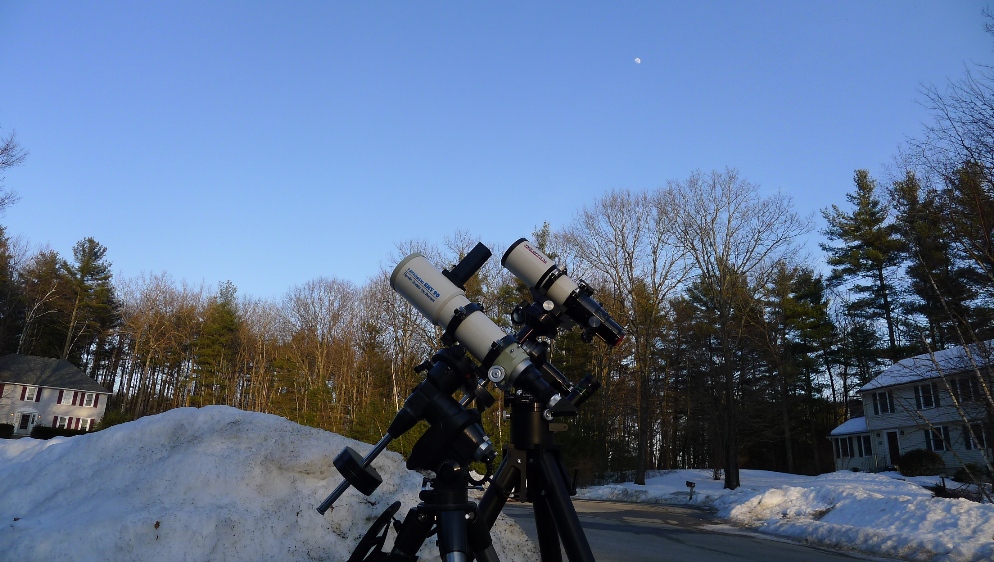
I spent an evening comparing my various Takahashi refractors. Ranking them optically: The FS-102 is best, followed by the FC-100, the FC-76, and the Sky 90. The differences in quality were not great. I wound up spending a lot of time going back and forth between the FC-76 and the Sky 90, as the two seemed closest in performance. The Sky 90 throws up a brighter image, and there was less straining to see dim objects like NGC 2158 near M35, and NGC 1907 near M38. However, on planets, the FC-76 was sharper, and I had an easier time pushing the powers. Its field was also flatter.
Experienced Takahashi connoisseurs will point out that there are at least two available fixes for the Sky 90 that might have made it put up a bigger fight. First, they make an Extender-Q module that acts like a kind of 1.6X barlow that flattens the field and corrects for the aberrations I noted. But the Extender-Q costs upwards of $500, and as I've pointed out, you've already spent close to $3k for the scope, and I didn't feel like spending more. Secondly, there is a Sky 90 II version out there. They must remain well-hidden, because in the twelve years I've been following these scopes, I've never seen one. Users report that many of the anomalies I reported are greatly reduced with the Mark II version.
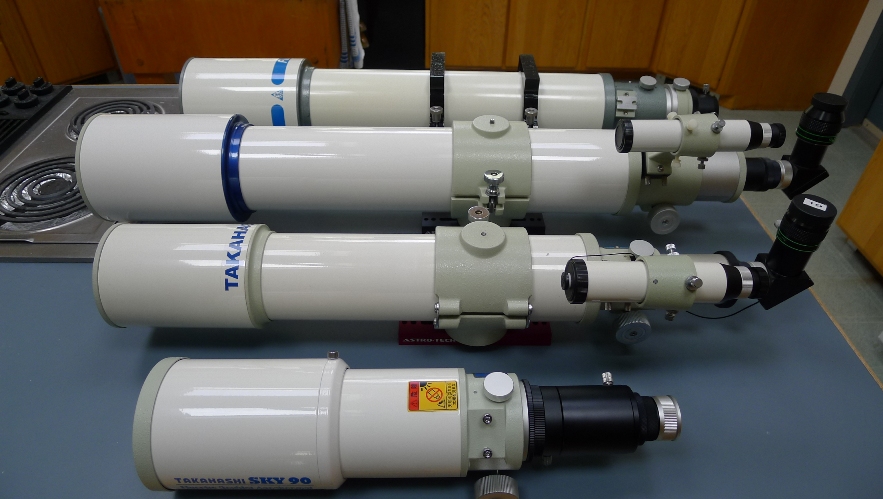
Conclusions:
I am the biggest Tak fan in the world, but even I have to admit, unless portability is the main concern, the TMB is a better scope and a better bargain. This should in no way discourage you from seeking out a Sky 90 that's what you want. It's still an excellent telescope, and used prices are reasonable. Its compact package comes closer to the spirit of the Astro-Physics Stowaway than the TMB does, and for many, that will be enough to sway the decision.
Lunar composite, Sky 90, ASI 120 MM camera
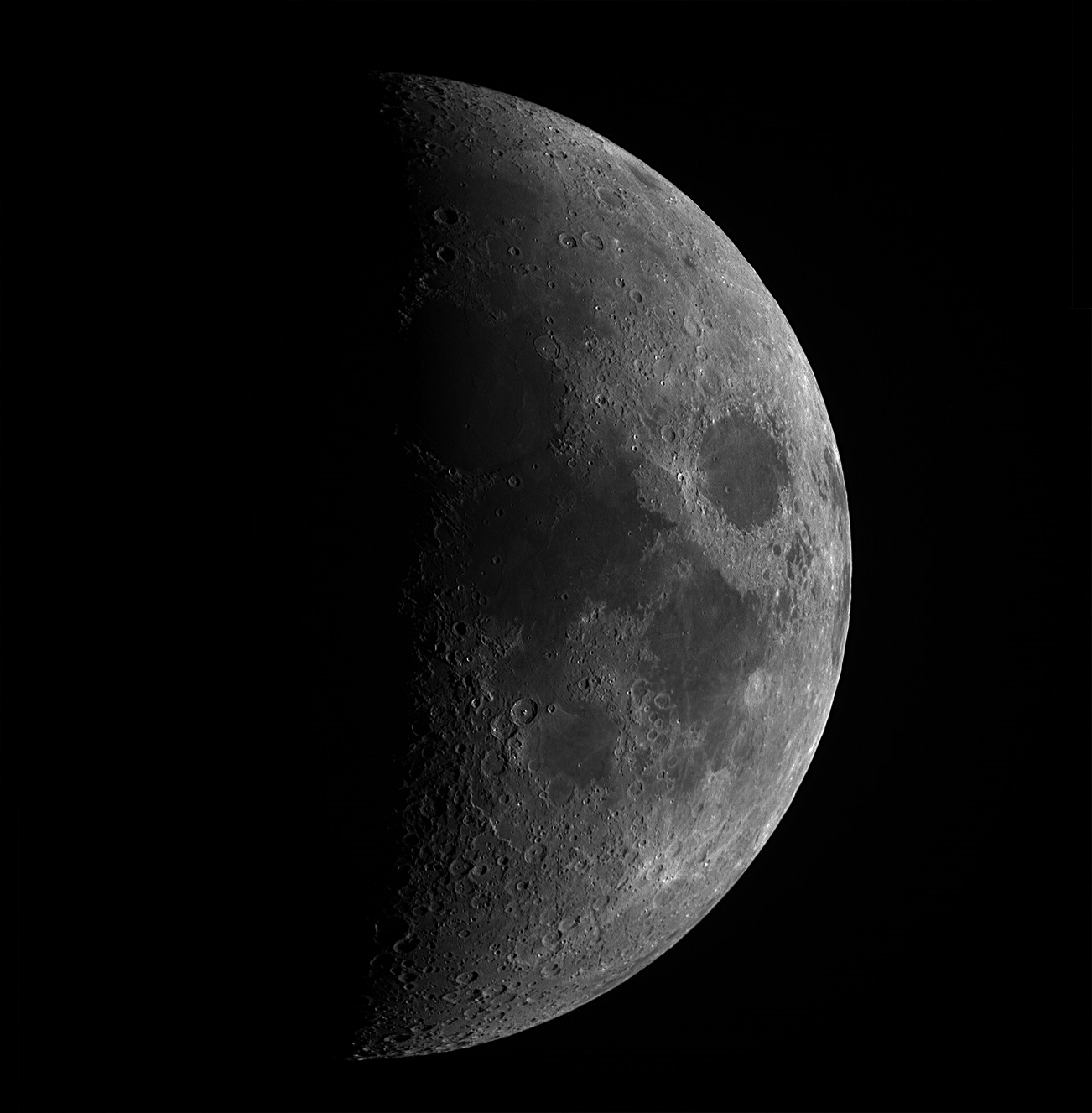
Lunar composite, TMB 92 SS, ASI 120 MM camera
